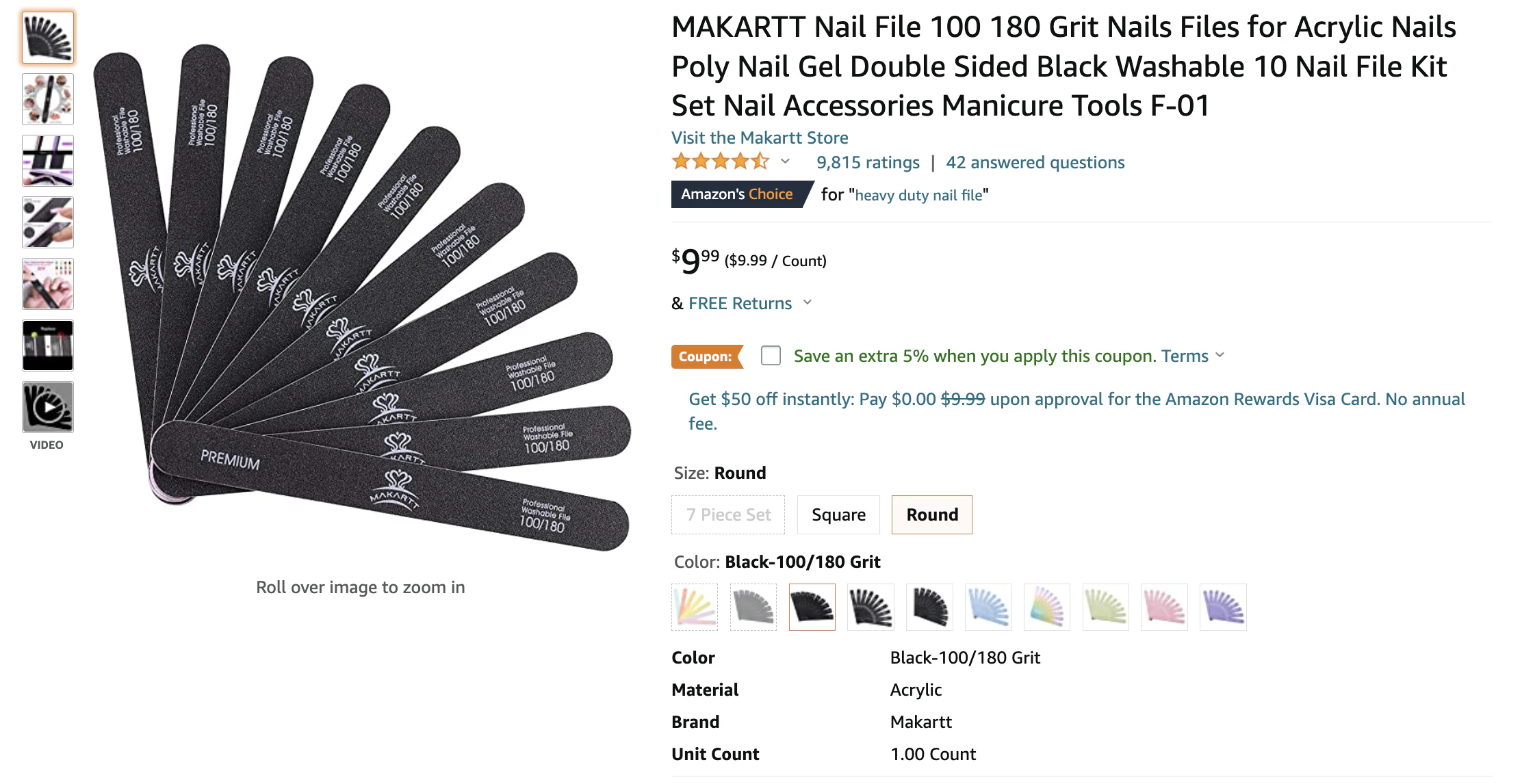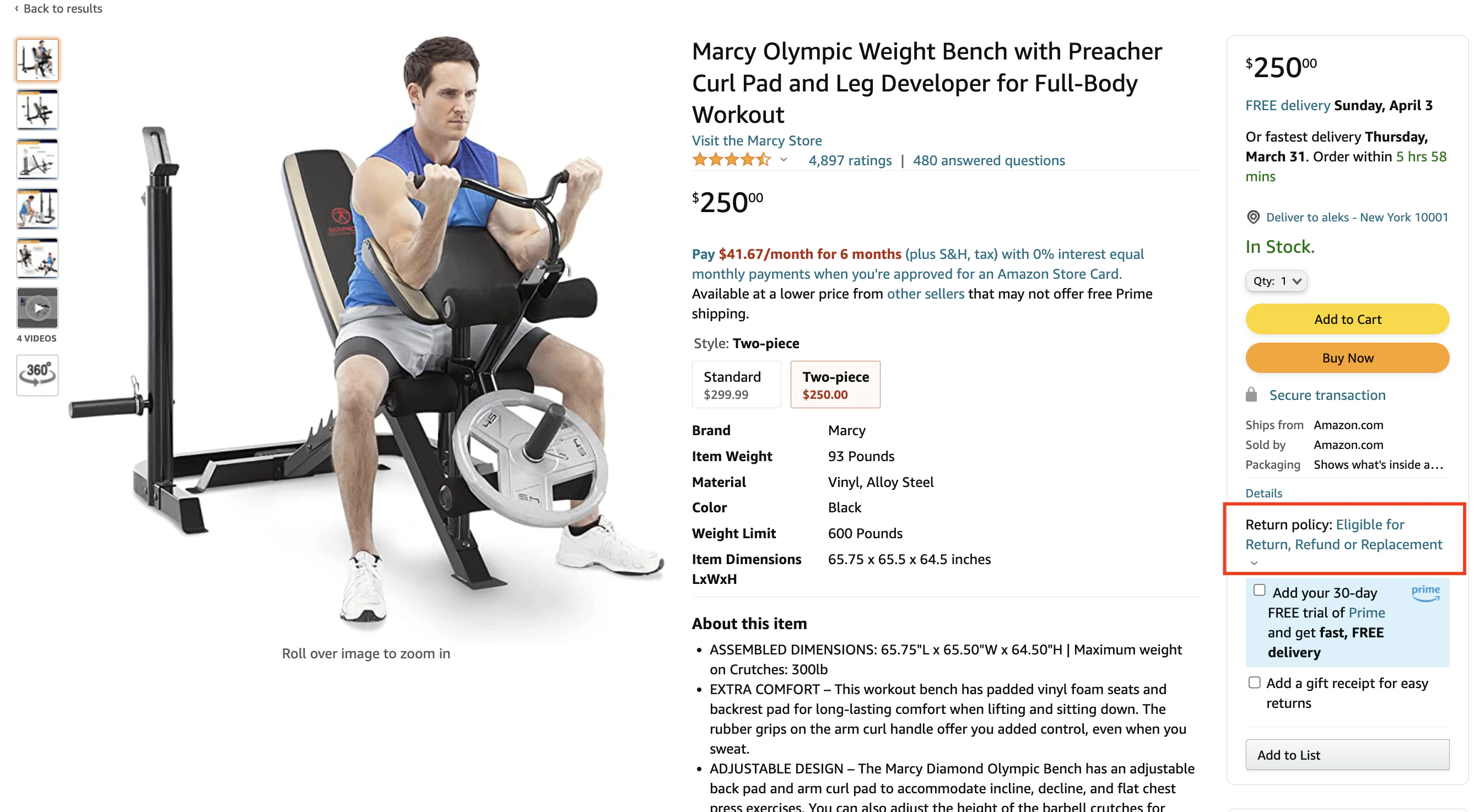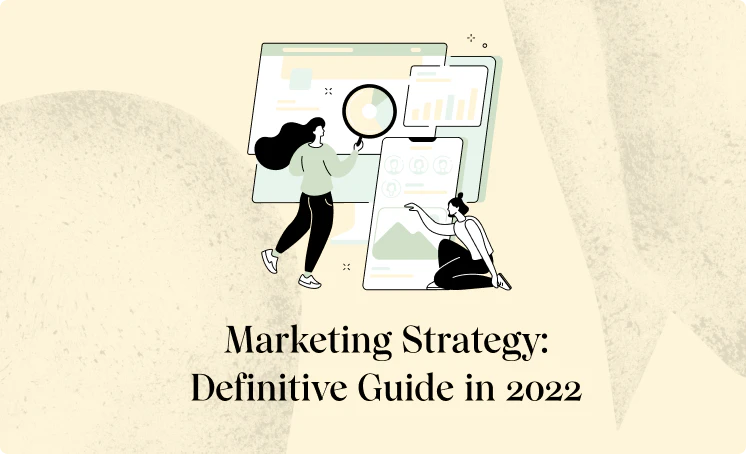Introduction
If you’re not selling on Amazon Prime, you’re not getting the most out of the marketplace.
Prime sellers gain access to certain perks, including more visibility, trust, and access to an army of loyal shoppers ready to spend some serious cash.
That said, signing up as a “professional seller” doesn’t guarantee Prime eligibility.
In this article, we’ll look at some of the reasons selling on Prime is well worth the extra effort, how to earn the coveted Prime badge, and look at your options for selling on the platform.
What Is Amazon Prime?
As of January 2020, Amazon Prime had a staggering 150M global subscribers.
So, unless you’ve been living under a rock with no WiFi access, you’re probably familiar with Amazon Prime.
In any case, let’s quickly go over what you’ll get by becoming an Amazon Prime member (you might even learn about some unused perks).
Amazon Prime is Amazon’s membership subscription.
Shoppers can subscribe for $12.99 a month or $119 for a full year to gain access to the following:
- Free shipping on Prime-eligible products. 2-day shipping is the standard, but depending on where you live, some products may be eligible for 1-day or even 2-hour shipping.
- Access to the Amazon Prime streaming service, as well as Prime Reading, Prime Gaming, and Prime Wardrobe
- Exclusive members-only deals like Prime Day and early access to “lightning deals.”

Why Should You Sell On Amazon Prime?
Amazon continues to dominate the global e-commerce industry per usual.
However, 2020’s pandemic crisis forced businesses online en masse, many of which flooded digital marketplaces like Amazon.
As a result, third-party sellers now compete on a whole new level. Every little detail can make or break a seller’s ability to convert customers—or even reach them at all.
The Amazon Prime badge isn’t a silver bullet, however, it has become an essential for sellers who are serious about turning a profit on the platform—it’s almost a barrier to entry if you want to compete with Amazon’s heavy-hitters.
While Amazon has strict requirements for Prime Sellers (more on that in a moment), the benefits are well worth the extra effort.
Here’s a quick look at some of the most compelling reasons you should secure that badge:
- Loyal customers. Prime is a shortcut for earning customer trust. Shoppers see the Prime badge and they know what to expect–fast turnarounds and a great experience. Shoppers know it means they’ll get free 2-day shipping, and that they’re buying from an Amazon-approved brand. At the same time, sellers also benefit from convenience: shoppers tend to go to Amazon first when they’re looking for a specific item–so by virtue of being in the right place–with the right badge–customers searching for your solution may be inclined to purchase through Amazon because of the perks they’re already getting as a Prime member.
- Access to high-intent shoppers. Unlike Google or social media platforms, Amazon users typically visit the platform because they’re planning on making a purchase. The Amazon search engine is designed to surface products that align with users’ queries, as well as their purchase history, behavior, and demographic information. For sellers, that singular focus means, visibility is the primary goal. Amazon Prime makes it easier to showcase your wares in front of those high-intent shoppers.
- Potential to boost sales. Amazon Prime members spend, on average, $1400 per year on the platform. By becoming a part of Amazon Prime, you’re eligible to grab a piece of that pie. Selling on Prime can also increase sales by making your products more visible compared to non-Prime products, since shoppers can filter their search to see Prime products only. That boost in visibility means you’ll likely see more visitors landing on your product pages, and as a result, lock down more conversions by offering Prime’s fast and free shipping.
- Greater chances of winning the buy-box. Sellers with Prime status have a better chance at earning the buy box than those that don’t have the designation. While it’s possible to land in the buy-box without the badge, Amazon’s algorithm tends to give preference to the products that best meet consumer needs—i.e.: the seller with the best price, most positive reviews, and fastest turnaround times. Because Prime-eligible products are most likely to check all the boxes, they’re more likely to earn that top spot.
Who Should Sell On Amazon Prime
Benefits aside, the Amazon Prime status may not be right for every online seller.
Sure, the Prime badge can increase your visibility and make shoppers choose your product over a competitor’s that doesn’t offer free shipping.
However, Prime status isn’t a guarantee that your product will sell. If it’s a bad product, customers won’t want it, whether you deliver in two days or two weeks. On the flip side, customers will be willing to endure a tiny bit of friction for a product they really want.
In any case, here’s a quick look at the types of online sellers who stand to benefit most from selling on Prime–as well as those who may not need it.
PRIME WORKS BEST FOR SELLERS WHO:
Own their brand but sell items that aren’t unique. If your brand makes items very similar to items offered by your competitors, Prime is an effective tool for helping you win the buy box and appear more attractive to potential customers. Items that fall into this category include things like plain T-shirts, socks, household items, and office supplies where customers might not care so much about the brand.

Additionally, these types of items often compete with private label label products (AKA they’re competing with Amazon) which makes Prime all the more essential.
Sell branded products available from other sellers. Prime status is also a must-have if you sell popular items products from other brands as a third-party. If several other sellers offer the same SKU, your only competitive advantages are price, visibility, and the benefits offered through Prime. This becomes especially important when competing sellers also have the Prime badge–in which case, you’ll also need to make sure that you’re running ads, generating reviews, and making sure that your pages are optimized.
IT MIGHT NOT BE A GOOD FIT IF:
You own a branded product that’s already in high demand. If consumers are eagerly buying your wares, and more importantly, searching for your products by name, they’ll buy it regardless of Prime status. In this case, opting into Prime means unnecessarily giving Amazon a cut of your sales.
At the same time, you do miss out on an opportunity to reach shoppers searching for “Prime only” results. That means you’ll need to consider your goals for this platform–are you trying to amplify your reach or increase spending among current customers already in the know?
Your price is better than Prime sellers competing for the same Buy Box slots. You can still win the Buy Box if Prime sellers offer similar items at a higher price point.
You sell used media products, such as textbooks or rare books, or refurbished products. These are unique by definition, meaning, you’re not exactly competing with other sellers. In this case, you’ll probably want to focus on driving very specific traffic to your product pages with targeted ads and optimized product pages.
You’re selling a product that’s hard to ship. If you’re selling an item that is too heavy or requires special care when shipping and handling, you may not be a good fit for Amazon Prime. Think large appliances or manufacturing equipment. If you’re selling through Amazon FBA, heavy and oversized items are subject to additional fees for shipping and storage. And for those sellers shipping these items directly, offering free shipping will kill any chance of turning a profit.
You sell products with very low sales volume. As with used or rare items, products that move slowly by nature aren’t likely to benefit much from Prime status. What’s more, Amazon FBA sellers can be penalized for slow-moving inventory and subject to long-term storage fees, removal fees, and may need to liquidate their inventory.
Qualification For Amazon Prime
Becoming an Amazon seller does not mean you’re automatically qualified to sell on Amazon Prime.
To become eligible:
- Your seller account must be in good standing
- You must be accepted into the Seller Fulfilled Prime (SFP) program or be an Amazon FBA seller (do note that while FBA products are automatically Prime-eligible, SFP sellers must apply for Prime eligibility and get certified).
- You must offer Premium shipping options
Amazon Prime is serious about seller performance metrics. If sellers fail to meet certain quality expectations, the program loses value for consumers.
Amazon SFP sellers (who store and ship their own inventory) must adhere to the following standards to continue displaying the badge:
- Agree to Amazon’s return policy
- Allow Amazon to handle all customer service tasks
- Use Amazon-approved carriers
- Ship orders on time (they must go out the same day the order was placed)
- Maintain an order cancellation rate of 0.5% or less
Selling On Amazon Prime
Once you’ve verified your Prime eligibility status, you’ll need to decide how you’d like to sell on Prime.
Contrary to popular belief, FBA (Fulfillment by Amazon) is not the only option for Prime sellers.
There are actually three different options–it’s just that Amazon FBA happens to be the easiest way to ensure shoppers receive the “Prime treatment.”
There’s also the option to handle fulfillment yourself, and a third option–Amazon Vendor Central–which is available by invite only.
Below, we’ll take a look at each of these options and the pros and cons that come with them.
FULFILLMENT BY AMAZON (FBA)
Fulfillment by Amazon, or FBA, is the easiest, most accessible way to gain access to Amazon Prime privileges.
It doesn’t matter what kind of business model you use, how long you’ve been selling on the platform, or whether you’re a household name or total unknown—all FBA sellers in good standing are Prime-eligible.
FBA allows you to outsource order fulfillment to Amazon. The idea is, you’ll ship your inventory to Amazon’s fulfillment centers and they’ll handle it from there–you’re still on the hook for managing inventory and coordinating deliveries, but Amazon handles the shipping, fulfillment, and customer service.

Now, it’s important to note that selling through Amazon FBA isn’t as easy as you might think.
For one, sellers are subject to a long list of fees.
Additionally, Amazon doesn’t provide explicit details outlining what it takes for FBA sellers to achieve Prime status and remain in good standing.
However, they do mention the following performance metrics:
- Following Amazon’s product and listing policies
- Keeping your order defect rate under 1%
- Adhering to Amazon’s storage limits—i.e. don’t send more inventory than you told them you’d be sending
- Watch out for “slow-moving inventory” – if your products aren’t selling, Amazon may limit your FBA storage capacity and eventually charge you for long-term storage and removal fees
Here are the pros of using FBA:
- Amazon handles fulfillment, shipping, and customer service
- Amazon will remove any negative feedback if it relates to shipping or customer service
- In addition to the Prime badge, your account will also indicate that orders are “fulfilled by Amazon,” which has been shown to improve customer trust during the buying process
- FBA is fully automated and integrates with the Amazon marketplace
- While FBA is notorious for its fees, it’s often less expensive than handling the shipping and fulfillment process internally
- Sellers don’t need storage space to sell on Amazon
And here are the cons:
- There are a lot of fees if you’re not careful, and FBA could cost a lot of money
- FBA can cost more than shipping items yourself–especially if you don’t sell at a high volume– so low-volume sellers likely won’t break even after all of the fees
- You may need to ship small quantities of each product to different fulfillment centers–or pay extra for Amazon’s Inventory Placement Service
- You’ll need to keep a close eye on inventory counts and make sure you replenish your stock regularly–that means placing orders as needed based on lead times
- Amazon may mix your products with products from other sellers which means there’s a risk that you’ll get negative feedback for damaged, fake, or poor quality products from another seller just because they arrived in the same box
SELLER FULFILLED PRIME (SFP)
Seller Fulfilled Prime–or SFP–essentially means you’re dealing with the fulfillment process yourself. The benefit is that SFP allows sellers to retain more control over their inventory, fulfillment, and the customer experience.
SFP makes the most sense for established sellers who already sell and ship products themselves on other channels like their website, social platforms, or other marketplaces such as eBay, Etsy, or Walmart.
You benefit because you can keep your existing logistics systems in place and avoid the unnecessary complication of managing inventory via Amazon’s fulfillment centers.
But, there’s a catch.
To qualify for SFP, you need to meet the same standards as items fulfilled by Amazon.
That means items must ship the same day they were ordered, and you’ll need to buy shipping labels from Amazon, use Amazon-approved carriers, meet Amazon performance standards, and offer free shipping.
It’s also not especially realistic for online retailers without sufficient warehouse space or logistics experience. In other words, smaller companies probably can’t meet these requirements.
According to Amazon, SFP works best if you’re selling the following types of products:
- Products with seasonal demand or unpredictable fluctuations
- Slow-moving inventory
- Items with multiple variations
- High-value items
- Products requiring specific handling or storage requirements
Here are the pros of SPF:
- Full control over inventory and fulfillment
- No FBA fees
- You’re only managing inventory in your own facilities
- You can sell products that aren’t eligible for FBA such as perishables or items with special storage requirements
- Potential for higher profit margins on heavy or oversized items (you’re only paying to ship directly to the customer, not Amazon and the customer)
- More control over refunds and returns
- You can pick and choose which items to ship via SFP vs. FBA to maximize profitability
On the other hand, here are the cons:
- It’s incredibly hard to qualify for SFP – sellers must pass a trial period that can last between 5 and 90 days, depending on how quickly they hit the 200-order mark
- In some cases, you may be put on a waiting list before the process even starts
- You must be capable of providing Amazon-level logistics–consistently shipping orders as they come in and covering all costs associated with maintaining compliance with Amazon’s requirements
- You’ll need to invest in storage space, as well as machinery, software, inventory systems, and the people required to run and maintain the whole operation
- If you fall short of Amazon performance requirements, you’ll need to go through the extra effort (and expenses) of switching to FBA if you want to keep the badge
VENDOR CENTRAL
Option three–Vendor Central– is invite-only. Sellers must be recruited by Amazon to become a wholesale supplier–which means, you’ll sell to Amazon, and Amazon sells your products to consumers. On the surface, it sounds like FBA–however, there’s one key difference.
With Vendor Central, Amazon deals with the fees, inventory management, and so on, whereas FBA requires sellers to manage everything except the fulfillment process.

Here are the pros of vendor central:
- Amazon manages the entire process–fulfillment, shipping, and service
Amazon is the customer–meaning, Amazon manages your inventory and covers storage, shipping, returns, and so on - Products are labeled as “shipped from and sold by Amazon” which can help increase customer confidence and persuade them to purchase on the spot
- Vendors gain access to programs like Subscribe & Save, Amazon Vine, and A+ content
But watch out for these cons:
- It’s invite only–Amazon must reach out to you to begin the process
- You need to be an established brand to access the benefits of Vendor Central–meaning, you’ll need to have a proven track record selling on the platform (likely, via SFP or FBA)
- Because Amazon owns the inventory, you’re giving up total control over your products–Amazon can slash prices as they see fit and they’re in total control marketing/advertising.
Desired Outcome
Selling on Amazon Prime can help you reach more customers and increase sales on the platform.
You’re benefiting from Amazon’s reputation, making it easier to persuade shoppers to purchase your product versus something similar from another seller, and Amazon gives preference to Prime sellers when it comes to the buy box, sponsored product placements, and organic search results.
Vendor Central, of course, is the best option, however, Amazon only invites established sellers with a proven track record–not struggling brands who could use a boost.
The easiest way “in” is by becoming an FBA seller, though again, participating in this program is a major time commitment and you’ll need to pay close attention to inventory levels, as well as how each product is performing to avoid paying unnecessary fees that eat into your profits.
SFP offers more control, but it’s hard to get into the program, and if you do get in, you’ll need to maintain the same quality standards as Amazon itself–which, let’s face it, isn’t realistic for smaller companies or those new to e-commerce.
Final Thoughts
Prime status can help you move more products, reach more customers, and ultimately, make Amazon a profitable sales channel for you.
Keep in mind that selling on Amazon Prime may not be right for every seller. If you’re competing with other sellers offering the same SKU or a viable substitute–pursuing the Prime badge is a no-brainer. For items that don’t fall into those two categories, the decision isn’t quite as clear cut.
Bottom line, you’ll need to weigh your options based on your goals and how much each option will cost.
Looking for ways to make more sales on the platform, whether or not you’re using Amazon Prime? Check out this post where we’ve gathered the 67 best strategies to increase your sales on Amazon!














.webp)

.webp)








.webp)









































.webp)






